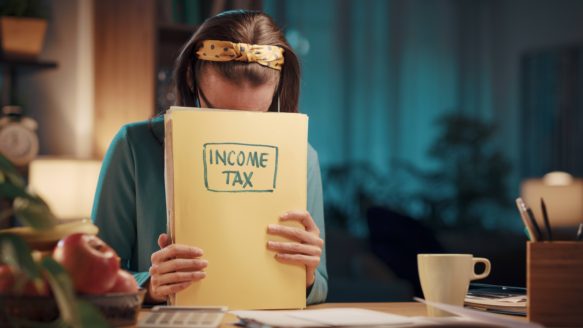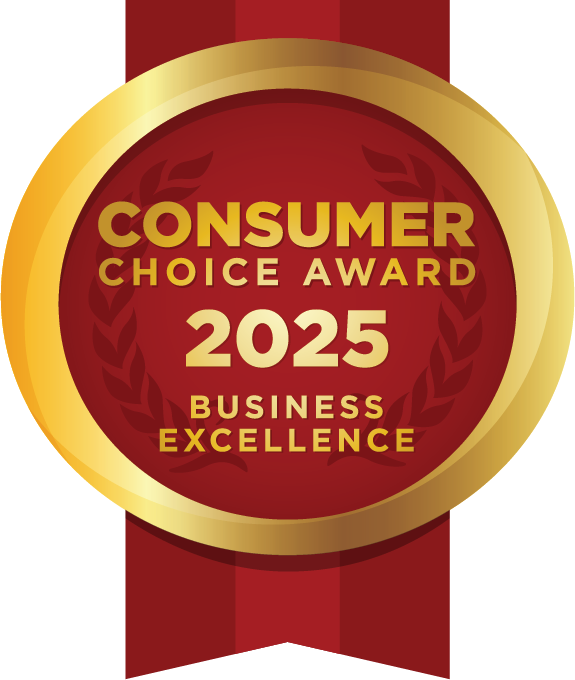
Debt Repayment: What Debt Should I Pay Off First?
Figuring out the best way to pay off debt is a difficult task, so if you are feeling stressed and anxious right now (or someone you care about is), we completely understand. But it’s important to remember that you are not alone. Not least because there is an unbiased, non-profit credit counsellor just a phone call away, but also because there are countless others who have been where you are right now and have successfully become debt-free. Just like you, they also wondered which debt repayment plan was best, or asked which debt to pay off first. And just like them, you’re going to figure it out – and we’re going to help!
So take a minute to imagine your life debt free. Close your eyes and picture yourself receiving that letter telling you that you’ve paid off your last credit card bill. If you make a plan, and stick to a strategy, you’re going to achieve your goals. But it needs to be the right plan for you. Some prefer to focus on getting rid of a loan or payment, while others are more concerned about paying extra money on interest.
If you’re reading this in Alberta and are trying to figure out the best debt repayment plan, then you’re taking a good step forward. Equifax reported that Alberta has the most consumer debt in Canada with an average of $25,056 per consumer, more than $3,500 above the national average. So, don’t worry – you are not defined by your debts and we are here to help.
Before we dive into some real world examples, let’s take a look at a strategy for choosing a debt repayment method.
How to Choose a Debt Repayment Method
Knowing what debt to pay off first is not a one-size-fits-all process. A lot will depend on your individual situation, so we’ve set out 4 steps below to help you decide which debt repayment method is best for you.
Step 1 – Make a budget focused on debt repayment
The more detailed your budget the better, but this doesn’t need to be a big, complicated spreadsheet. Simply write down how much money you have coming in and how much money you have going out. The money you have left over is what you’ll use to start paying off your debt. If there’s nothing left over, you’ll need to think about some frugal habits to start saving money. If you need help creating a budget, give us a call and we’ll create one with you – for free!
Step 2 – Make sure you always pay the minimum balance on your credit cards and loans
Before you start thinking about the best method to pay off all your debts, it’s crucial to remember that the most important step is paying the minimum balance on each credit card and loan. Use your budget from Step 1 to make sure that you have enough money to cover your minimum payments on all debts. Whatever you have left over is what you’ll use for one of the methods below.
Step 3 – List your debts in order
When choosing the best debt repayment method for your individual situation, you should create two different lists. On the first list, order your debts in terms of interest rates, with the highest rate at the top, and the lowest at the bottom. On the second list, order your debts in terms of debt amount, with the smallest at the top and the largest at the bottom.
Step 4 – Choose a debt repayment method
Choosing the right method from the options below is going to be a personal preference, but the steps above should assist you in the process. If you have a lot of small debts, all with similar levels of interest, then perhaps the snowball method will work for you as you’ll want to build some momentum. Or maybe you only have two debts, with very different interest rates, in which case you’ll want to go with the Avalanche method (also called Roll Down Your Debts). Or possibly you just want some peace of mind and would rather consolidate all your debts on the Orderly Payment of Debts Program.
| The Name | The Method | The Results |
|---|---|---|
| Avalanche Method (Roll Down Your Debts) |
Choose the debt with the highest interest rate. Once it’s paid off, target the debt with the next highest rate and so on. | This method results in you paying less interest over time. |
| The Snowball Method | Target the debt with the smallest amount. Once paid off, work on the next smallest. | This method results in a boost to your dopamine and self-esteem as you eliminate debts. |
| Orderly Payment of Debts (OPD) Program (Debt Consolidation) |
Combines all of your debts into one monthly payment with a fixed interest rate of 5%. | The OPD program results in less interest, a simple monthly payment, and hands-on help from your own credit counsellor. |
If you’re still not sure where to start or how to start paying off your debt, try our Tackle Debt course which will walk you through a step-by-step process.
Real Life Examples on How to Pay Off Debt & Save Money
Now that we have discussed different methods of debt repayment and the steps to take to decide which method is best for you, let’s take a look at some real life examples of two former Money Mentors clients who faced seemingly insurmountable debts and were successful in repaying their debt in full.
Example #1: Payday Loans & Missed Payments Plunged Russell Into Deep Debt

Russell came to Money Mentors with $35,200 of credit card debt and payday loans. He opted to go on the OPD program for peace of mind and to take advantage of the fixed interest rate of 5%. However, if Russell had decided to try and pay off his debts himself, this would be a clear example of a time when the avalanche method would work best.
Let’s take a look in more detail. Let’s say Russell’s debt was broken down as follows:
| Debt | Amount | Interest Rate (APR) |
| Credit Cards | $29,200 | 19.99% |
| Payday Loans | $6,000 | 442% |
This is a very straightforward example of when to use the avalanche method. In this situation, Russell would be best to target his payday loans directly as they have a much higher APR (Annual Percentage Rate) than his credit card debt. Once he paid off the payday loan, he could then use the money he was paying towards this debt for his credit card debts.
However, with debt like this and such a dangerously high APR on his payday loans, Russell made the smart decision to go on the OPD program. With a fixed interest rate of 5%, and a single monthly payment, Russell found the OPD program to be just what he needed, and he successfully became debt-free. He said: “To be able to feel free is a pretty life changing experience, because I think most of us that get stuck in debt feel like we’re trapped.”
Example #2: Entrepreneurial Debt & Starting Over Left Melissa in a Lurch

Melissa came to Money Mentors in Calgary with $21,000 of debt after moving back from BC where she tried to set up her own gym. Just like Russell (above), she opted for the OPD program. For this example, let’s say her debts were broken down as follows:
| Debt | Amount | Interest Rate (APR) |
| Credit Card 1 | $8,200 | 19.99% |
| Credit Card 2 | $5,000 | 20.99% |
| Credit Card 3 | $3,800 | 19.99% |
| Credit Card 4 | $2,500 | 20.99% |
| Credit Card 5 | $1,500 | 19.99% |
With five different credit card debts and interest rates at roughly the same amount, this is a good example of a situation where Melissa could opt for the snowball method. By targeting her credit card debt of $1500 and getting this paid off, she is likely to build up some momentum to tackle her next debt, and the next one, before her snowball grows in size and she can take down the larger amounts.
So what is the best way to pay off debt for you?
Answering this question is never easy. If your main focus is on not paying too much interest, then the avalanche method might be best for you. If you find it hard to motivate yourself and need an extra boost, then perhaps starting with smaller debts on the snowball method is best. Or, if you want to consolidate your debts into a single monthly payment with a fixed interest rate of 5%, then the Orderly Payment of Debts program might be what you need.
The two most important things are that you pay your minimums and that you make the right decision for you. No one else knows your individual situation as well as you do. So, when you come to making a plan and choosing a debt repayment strategy, choose an option that will fit your circumstances and that you will stick to. If you want to pay your debt as quickly as you can, try out our Accelerated Debt Payoff Calculator.
If you need some help with your decision, give us a call. Our unbiased credit counsellors will listen to your financial situation without judgment and advise you on the best option for your individual needs. As a non-profit, we are required to give you truly independent advice. We do administer the Orderly Payment of Debts program on behalf of the Government of Alberta. However, our counsellors see many people every day who are not a right fit for the program. In those instances, their credit counselling sessions are still 100% free, and they are always welcome to come back anytime. So if you need free financial advice with no strings attached, book an appointment today. And remember, we have credit counsellors in Calgary and Edmonton, but we are happy to meet virtually with anyone in Alberta.
Frequently Asked Questions
How do I know which debt to pay off first?
Follow the four step plan to figure out which debt to pay off first:
Step 1: Make a budget to figure out how much money you have to put towards debt payments.
Step 2: Make sure you always pay off the minimum amounts on all your debts.
Step 3: Make two lists of your debts; one in order of debt amounts and another in order of interest.
Step 4: Choose between the avalanche method, the snowball method, or a debt consolidation program (such as the OPD program).
Is it better to pay off one credit card or reduce the balances on two?
Once you make sure that you are paying all the minimums on all your credit card debts, we suggest focusing on individual balances rather than multiple. Either focus on the balance with the highest interest (avalanche method) or aim to pay off the smallest debts first (snowball method).
How to pay off $5000 debt?
$5000 of debt is a manageable size and an amount that would work well for either the avalanche method, the snowball method or the OPD program. The most important steps are making sure you always pay the minimum if you have multiple debts and choosing a debt repayment plan that works for your own situation.
How to pay off debt and save money?
The best way to pay off debt and save money at the same time is to have a detailed and realistic budget. This will help you understand how much money you have left over after all the necessities are paid for. Always focus on paying your minimums as well as targeting high interest debt.
Have questions?
Need more information or want to talk to an accredited financial counsellor for peace of mind? Let us help.
Call 1-888-294-0076 or book an appointment. It’s free for all Albertans.








